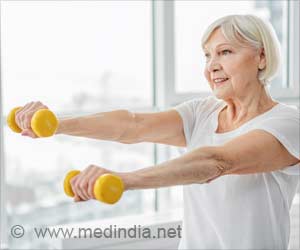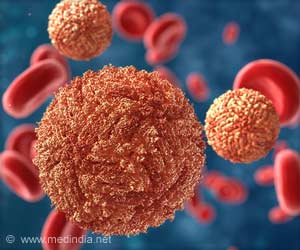- The American Heart Association has published a statement on exercise and heart health
- It recommends that the intensity of exercise should be increased incrementally
- It indicates that this will help to keep the heart healthy and reduce the chances of cardiac events
The Chairman of the Writing Committee for the American Heart Association’s Scientific Statement was Dr. Barry A. Franklin, PhD, who is Director of the Cardiac Rehabilitation Program and Exercise Laboratories at the William Beaumont Hospital, Royal Oak, Michigan. He is also a Professor of Physiology at Wayne State University School of Medicine, Detroit, Michigan, USA.
Intensive Exercise is Not Always Good for the Heart
Aerobic exercises, sometimes also called cardio-exercises, are usually performed at low intensity and are generally beneficial for the heart. These exercises increase the pumping capacity of the heart, as well as elevate tissue oxygenation levels. Hence, aerobic exercises are good for maintaining a healthy heart. Some examples include walking, jogging, cycling and swimming, among many other activities.However, high-intensity and endurance exercises such as sprinting, running marathons or participating in triathlons can raise the risk of the following cardiac events:
- Sudden cardiac death
- Cardiac arrest
- Stroke
- Atrial fibrillation (a serious heart rhythm disorder)
- Heart attacks
“Exercise is medicine, and there is no question that moderate to vigorous physical activity is beneficial to overall cardiovascular health. However, like medicine, it is possible to underdose and overdose on exercise – more is not always better and can lead to cardiac events, particularly when performed by inactive, unfit, individuals with known or undiagnosed heart disease,” says Franklin.
Findings on which the American Heart Association’s Scientific Statement is Based
Based on the review process, which involved carefully scrutinizing over 300 scientific publications, the following major findings were made:- Exercise benefits the majority of people by improving physical fitness and outweighs the risks
- 50 percent lower risk of sudden cardiac death and heart attacks occur in physically active individuals
- Potential risks of cardiac events also occur due to intensive exercise training
- 50 percent of cardiac events in marathon runners occur in the last mile
- Physical activity at high altitudes significantly increases the risk of cardiac events
- Risk of cardiac events can be reduced by acclimatization for one day at the particular altitude prior to commencing physical activity
- Risk of atrial fibrillation is highest in sedentary individuals
- Risk of atrial fibrillation is almost as high in individuals undergoing high-intensity exercise training
- Atrial fibrillation risk is reduced by performing a moderate-intensity exercise
- Risk of sudden cardiac death and heart attacks in male marathon runners has increased over the years
- Risk of sudden cardiac death and heart attacks in female marathon runners is 3.5-fold lower than their male counterparts
American Heart Association’s Recommendations for Implementing a Healthy Physical Activity Program
- Light, warm-up exercises should precede moderate to vigorous exercises to allow the heart rate to rise gradually
- At the beginning, walking on a plain surface is recommended for 6-8 weeks
- After 6-8 weeks, walking-up hills, jogging and more vigorous activities can be performed
- Duration of exercise should be increased gradually from 5 to 10 minutes at first, then slowly building-up till the desired time-limit is reached
- Intensity of exercise should be reduced when the body is exposed to environmental stress, such as high humidity or high altitude
- Cooling-down exercises, such as walking at a slow pace is recommended to allow the heart rate to come down to normal gradually
- Individuals with confirmed heart disease, such as a prior heart attack, angioplasty or bypass surgery, should seek medical approval before starting an exercise program
- Sedentary or inactive individuals should also seek medical approval prior to joining an exercise program
- Exercising should be stopped immediately and medical advice should be sought if the following symptoms occur:
- Shortness of breath
- Lightheadedness
- Chest pain
- High chest pressure
- Rapid increase in heart rate
- Blood pressure fluctuations
Concluding Remarks
Franklin concludes: “More people are running marathons, participating in triathlons and doing high-intensity interval training. The purpose of this statement is to put the benefits and risks of these vigorous exercise programs in perspective.”Funding Source
The American Heart Association received funding from various foundations, corporations, pharmaceutical companies and medical device manufacturers.Reference:
- Exercise-Related Acute Cardiovascular Events and Potential Deleterious Adaptations Following Long-Term Exercise Training: Placing the Risks into Perspective – An Update: A Scientific Statement from the American Heart Association - (https://www.ahajournals.org/doi/abs/10.1161/CIR.0000000000000749)
Source-Medindia
















